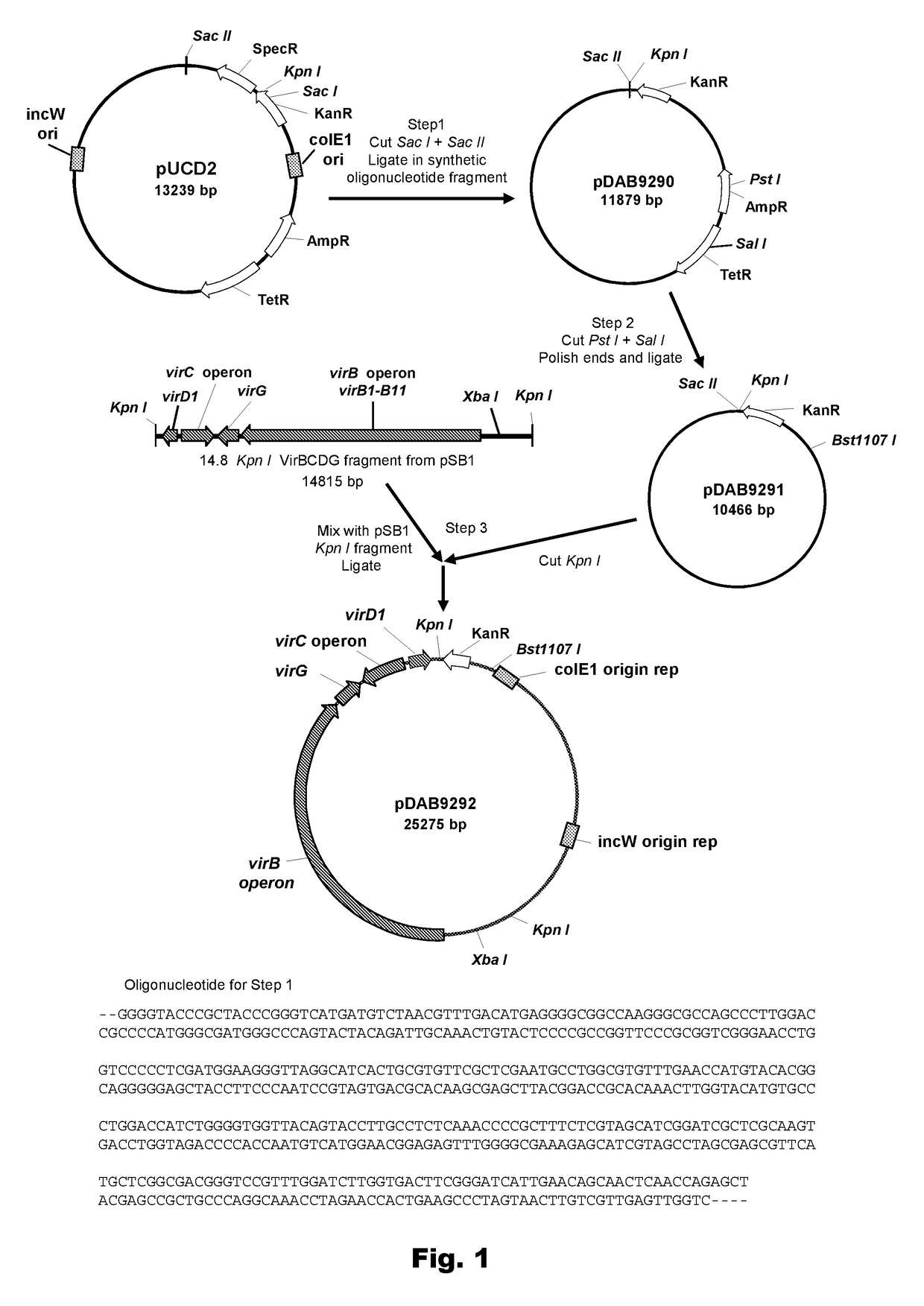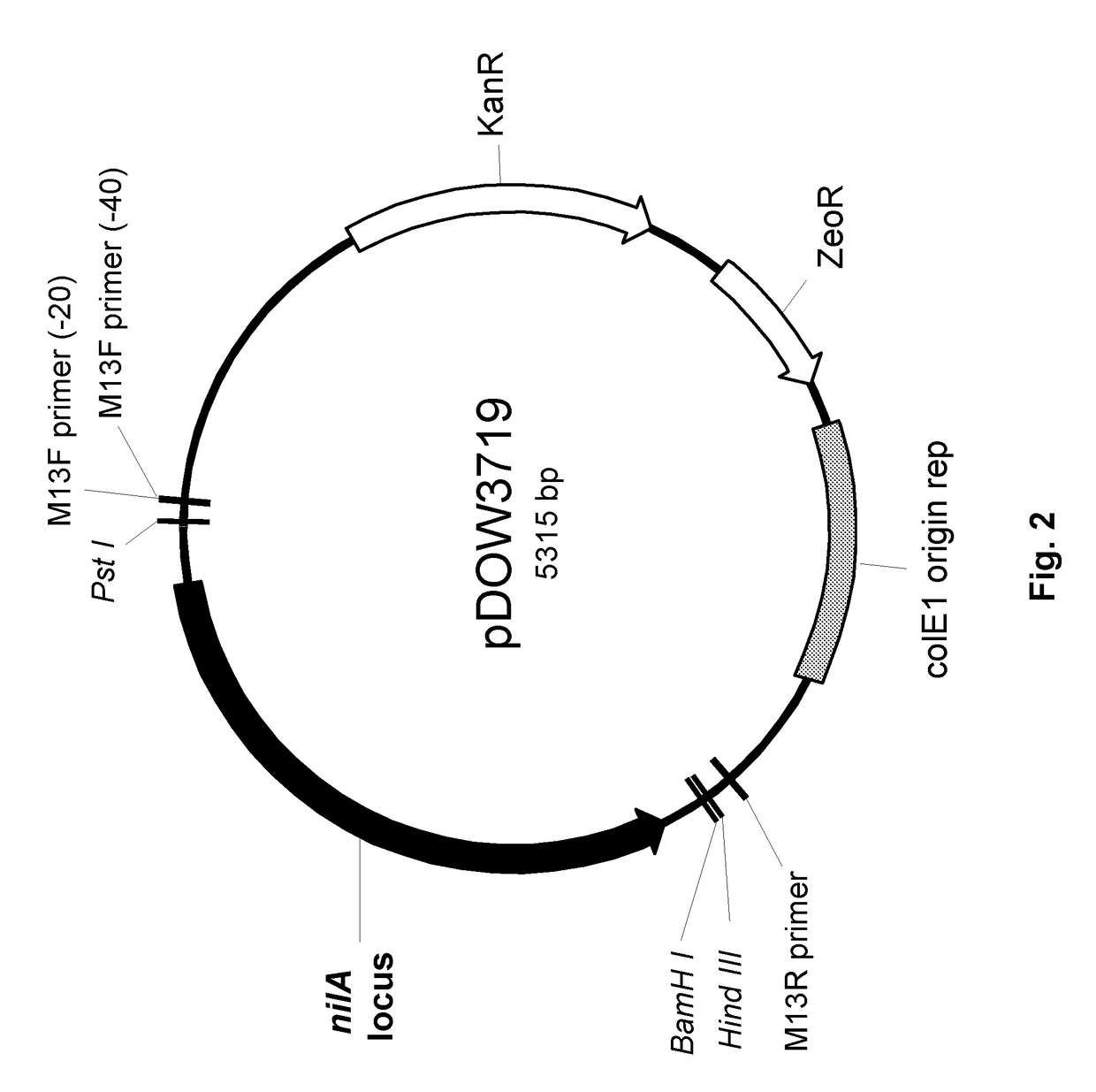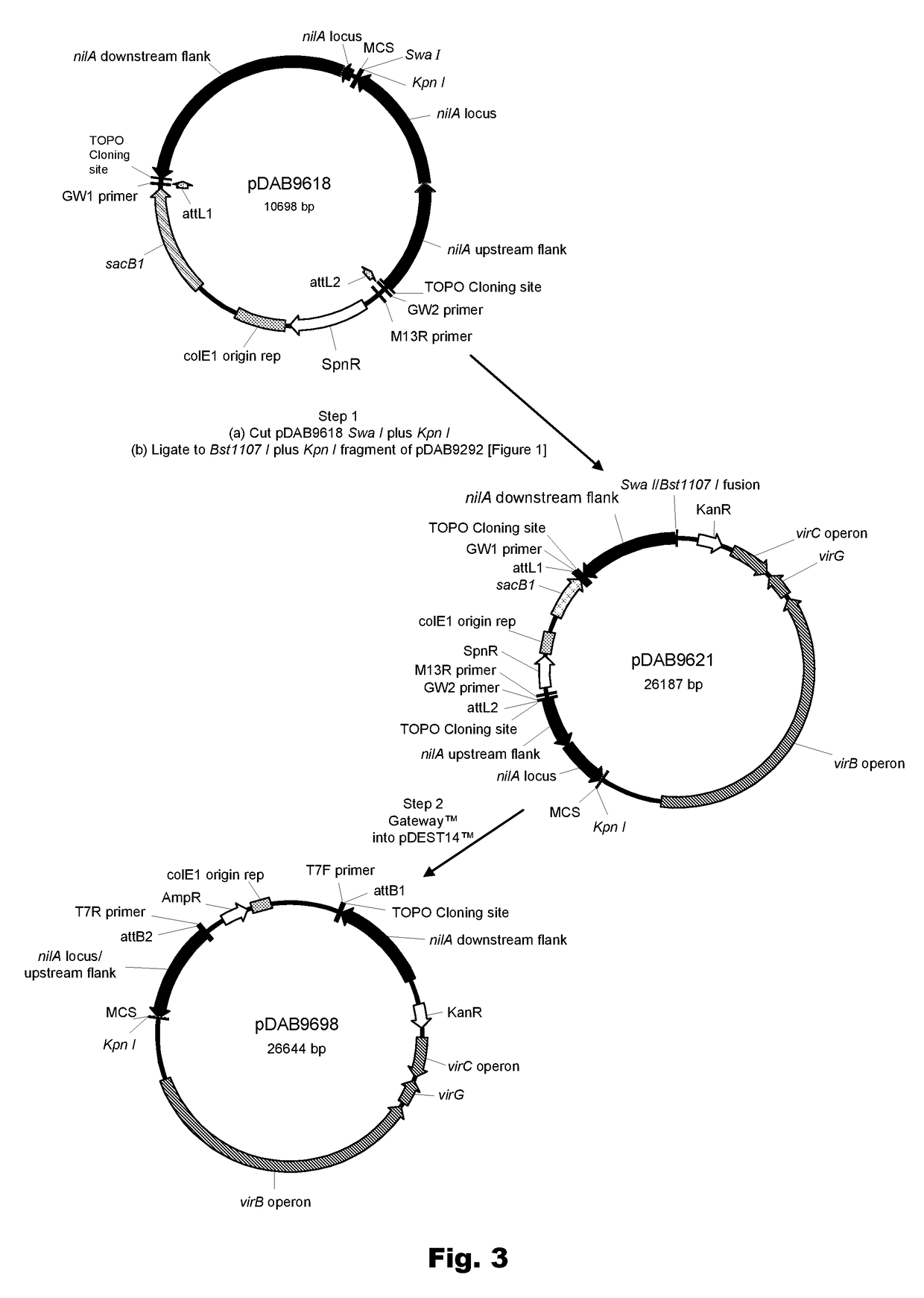Method of increasing plant transformation frequency using modified strains of Agrobacteria
a technology of agrobacteria and plant transformation frequency, which is applied in the field of agrobacteria strains, can solve problems such as instability or rearrangemen
- Summary
- Abstract
- Description
- Claims
- Application Information
AI Technical Summary
Benefits of technology
Problems solved by technology
Method used
Image
Examples
example 1
Construction of a Deletion Variant of Plasmid pUCD2
[0074]Construction of plasmid pUCD2 was described by Close et al. (1984, Plasmid 12:111-118), and the complete 13,239 bp DNA sequence is disclosed for the first time herein as SEQ ID NO:1. pUCD2 harbors four genes conferring bacterial resistance to antibiotics: specifically, resistance to Spectinomycin, Kanamycin, Tetracycline, and Ampicillin (FIG. 1). Standard molecular biology methods, as taught, for example, in Sambrook et al. (1989, Molecular Cloning: A Laboratory Manual (2nd Edition., COLD SPRING HARBOR LABORATORY PRESS, Plainview, N.Y.) and Ausubel et al. (1995, Current Protocols in Molecular Biology (GREENE PUBLISHING AND WILEY-INTERSCIENCE, New York), and updates thereof, were employed in this and other steps described in this example and in other examples of this disclosure. A first modification to pUCD2 was made by cleaving pUCD2 DNA with restriction enzymes Sac I and Sac II and ligation to a mostly double-stranded oligonu...
example 2
Cloning of a 14.8 Kpn I virBCDG Fragment into pDAB9291
[0076]A 14.8-kbp Kpn I fragment containing the virG, virB, and virC operons and virD1 from the “supervirulent” pTiBo542 (FIG. 1) was isolated from plasmid pSB1 (Komari et al., supra; and Komori et al., supra), and cloned into the unique Kpn I site of pDAB9291. Plasmids containing each of the two possible orientations of the insert fragment were obtained, and were named pDAB9292 and pDAB9293. One plasmid, pDAB9292 (FIG. 1) was selected for further work. The DNA sequence of pDAB9292 is disclosed as SEQ ID NO:5.
example 3
Construction of a RecA-Deficient Agrobacterium Strain Harboring the Helper Plasmid pTiEHA105
[0077]Agrobacterium strain UIA143 is a RecA-deficient strain having the C58 genetic background and was constructed and described by Farrand et al. (supra). The chromosomal recA gene was deleted and replaced with a gene cassette conferring resistance to Erythromycin at 150 μg / mL. The UIA143 strain contains no Ti plasmid or Ti plasmid derivative.
[0078]Agrobacterium strain EHA105, constructed and described by Hood et al. (1993, Transgenic Research 2:208-221), harbors a helper plasmid (herein called pTiEHA105) derived from the “supervirulent” pTiBo542 plasmid. Plasmid pTiEHA105 DNA was prepared from strain EHA105 and introduced by electroporation into cells of strain UIA143 made electrocompetent by standard methods (Weigel and Glazebrook (2002) Arabidopsis: A Laboratory Manual, COLD SPRING HARBOR PRESS, Cold Spring Harbor, N.Y., 354 pages; Mersereau et al. (1990) Gene 90:149-151; Mattanovich, et ...
PUM
| Property | Measurement | Unit |
|---|---|---|
| Resistance | aaaaa | aaaaa |
| Voltage | aaaaa | aaaaa |
| size | aaaaa | aaaaa |
Abstract
Description
Claims
Application Information
 Login to View More
Login to View More - R&D
- Intellectual Property
- Life Sciences
- Materials
- Tech Scout
- Unparalleled Data Quality
- Higher Quality Content
- 60% Fewer Hallucinations
Browse by: Latest US Patents, China's latest patents, Technical Efficacy Thesaurus, Application Domain, Technology Topic, Popular Technical Reports.
© 2025 PatSnap. All rights reserved.Legal|Privacy policy|Modern Slavery Act Transparency Statement|Sitemap|About US| Contact US: help@patsnap.com



